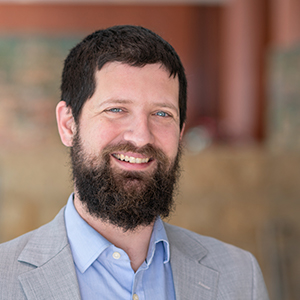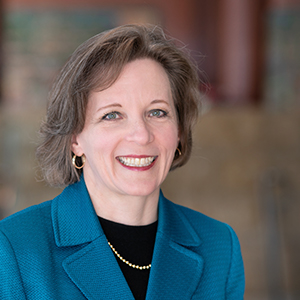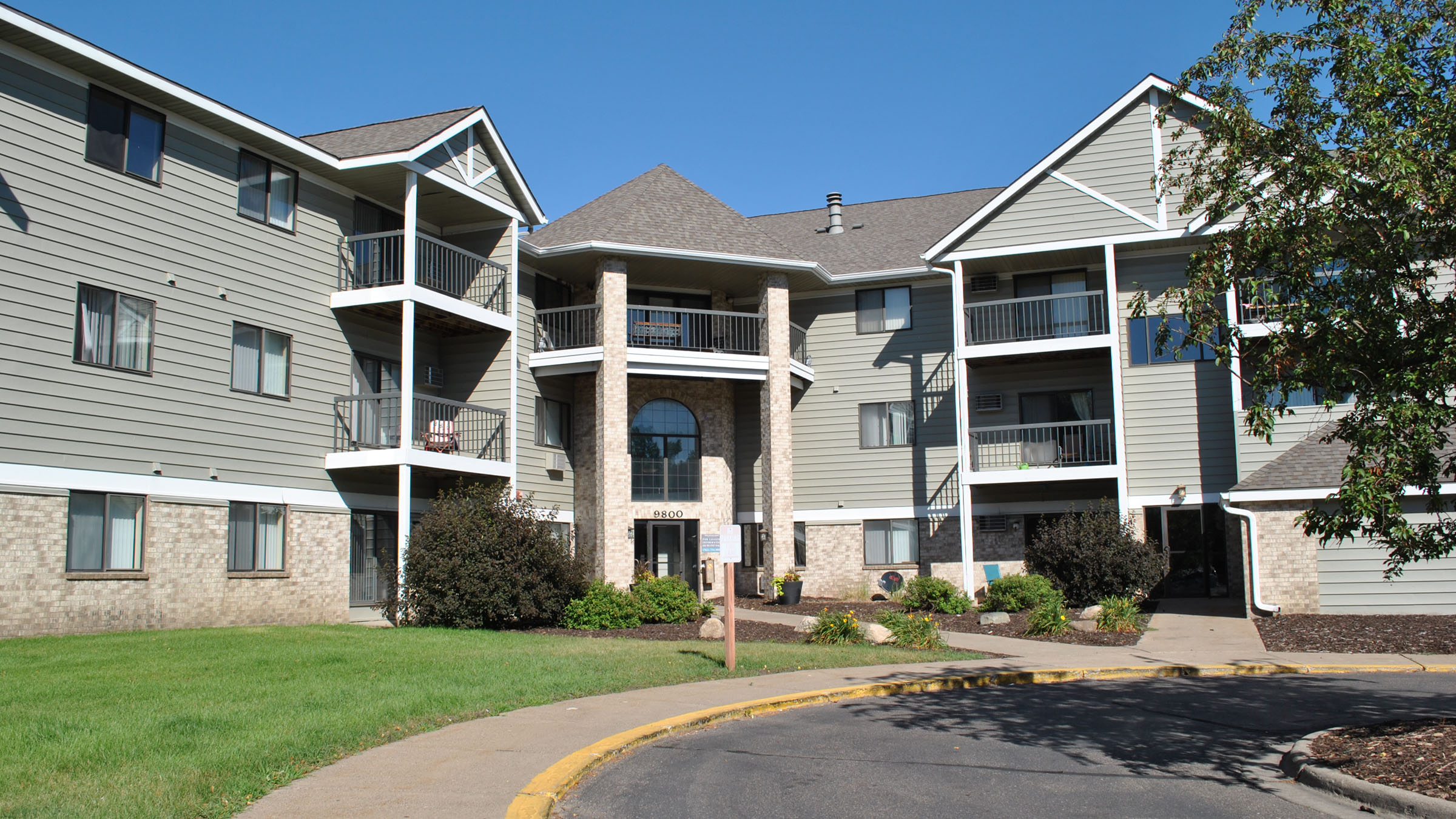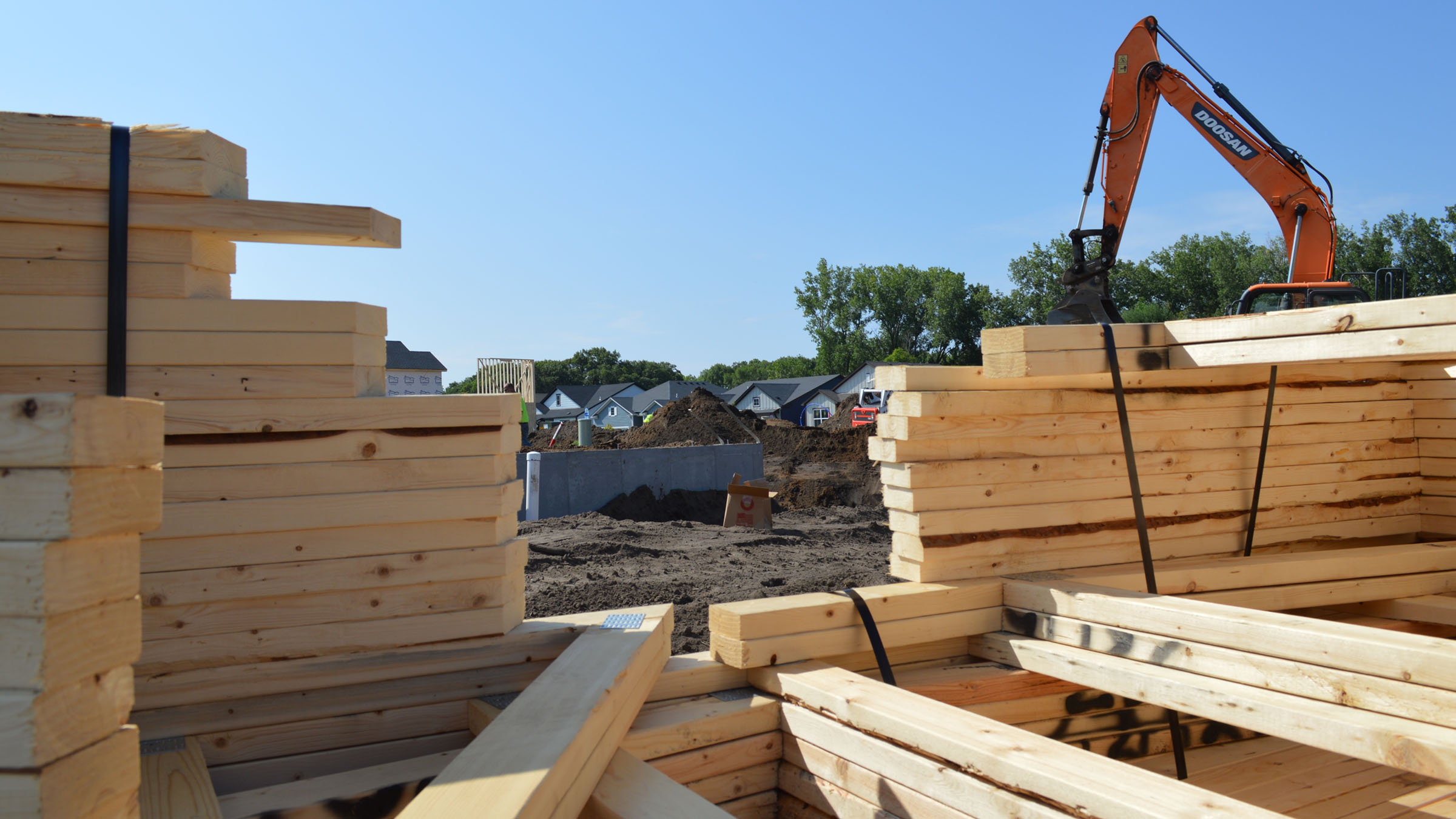In the aftermath of the COVID-19 pandemic, many apartment owners in the greater Minneapolis-St. Paul metropolitan area are facing increased costs and decreased revenues. These challenges are affecting owners large and small, for-profit and nonprofit, affordable and market-rate, locally based and national, and if left unaddressed could endanger the region’s housing supply. To assess these impacts, in December 2023 and January 2024 the Federal Reserve Bank of Minneapolis interviewed an array of people from 17 firms that own, manage, and operate a total of roughly 62,000 apartments in the region—a pool made up of recently constructed Class A or B apartments,1 naturally occurring affordable housing (NOAH),2 and income-restricted affordable housing.
The costs of owning apartments are rising
One property owner described their line of work as “toilets, taxes, and tenants.” Property owners have to deal with staffing and other costs related to the physical maintenance of their buildings, “softer” operating expenses like taxes and insurance, and changes in demand for or behavior within their units. Our interviewees described significant changes in all three categories. Nearly all our interviewees reported rising labor costs resulting from both raises for existing employees and higher wages needed to attract new staff. Data bear out their perception, as average weekly wages in the Lessors of Residential Buildings and Dwellings industry have risen 29.8 percent from third quarter 2019 (pre-pandemic) to third quarter 2023 (the most recent period for which data are available), compared with an 18.8 percent increase across all employers in the seven-county Twin Cities area.3
Apartment operators are grappling with hiring challenges. Five interviewees said that property maintenance staff are particularly hard to find as this workforce ages. Several owners of affordable housing also mentioned difficulties finding and retaining property managers. “These are not high-paying jobs, they are frontline workers collecting rent,” said one manager of affordable housing. They suggested that the personal and economic distress the COVID-19 pandemic caused their tenants had made frontline property management work even more difficult.
The pandemic also affected maintenance needs, in ways unique to the sector. During the stay-at-home period, maintenance staff had less access to units to perform regular repairs. Tenants also spent more time in units, placing more wear and tear on appliances and fixtures and using more electricity and water. Six property owners told us that turnover costs—the expenses needed to prepare a vacated unit for a new occupant—had gone way up as a result.
To address the increases in maintenance costs and difficulties finding staff, some owners are exploring new technologies, like remote 3D apartment tours, and new staffing approaches, like having property managers serve multiple buildings. To decrease contracting costs for services like snowplowing, janitorial work, and security, some firms are bringing formerly subcontracted services in-house. Still others are funding training programs to create a pipeline of employees to replace those in the aging maintenance workforce.
Property owners are taking an active approach to reduce their property tax expenses. Many property owners told us that the assessed values of their properties, which determine their property taxes, are currently higher than their properties’ actual market values. Interviewees shared that they are appealing their property tax assessments to reduce their tax payments. If this is a broad enough trend, and apartment owners are successful, their reduced property taxes could cause a notable increase in the share of property taxes homeowners pay.
Fewer options exist for managing rapidly rising property-insurance costs. Sixteen of 17 firms reported significant jumps in their property-insurance premiums. More than half reported year-over-year premium increases of at least 20 percent and six said their premiums had increased at least 33 percent. These premium hikes came with larger deductibles, with some increasing as much as fivefold over the year.
“Drastic deductible increases make me the most anxious,” one interviewee told us. “The premium increases are really large and hard to pay for, but at least you know what they are. These deductible exposures, you have no way of knowing what you are actually going to see.”
In other words, the owners we spoke with are paying notably more than they used to for coverage that will leave them more financially exposed should they need to use it. Some owners described having limited latitude to negotiate different insurance options because the insurance they carry must meet requirements spelled out in their financing agreements. Others suggested that fewer insurers are willing to insure multifamily housing than previously, should an owner wish to shop around.
Cost increases don’t just stem from the labor market challenges and inflationary pressures that firms across sectors face. Interviewees said that in the aftermath of the COVID-19 pandemic, increased crime and decreased access to public safety resources are driving higher security costs for providers of affordable housing, both NOAH and income-restricted. Of the 14 firms that manage at least some affordable properties, 10 named security as a significant cost concern. These challenges were often described as being particularly prevalent in Minneapolis.
Some interviewees suggested that their private security investments were paying for services previously provided by public safety departments. Property owners are spending significantly more on private security staff, whether in-house or contracted. Increases in costs to fix things like broken windows and stripped copper are also challenging.
One owner said that while security spending was hardly worth noting before the pandemic, “we’re now spending 30 percent of our operating budget on security costs. We’re spending as a result of everything from nuisance crimes, like people breaking a window, to really serious crimes—like assaults on staff or residents.”
Some commercial insurers are pricing safety perceptions into their policies and requiring “security assessments” for some properties. According to one interviewee, these audits cost up to $5,000 per property, and there’s no indication that they’ll be a one-time expense as opposed to a recurring policy-renewal requirement.
As one interviewee explained, “[Security audits by insurers] basically extend our liability as landlords, and [the audits] aren’t required of properties in every neighborhood. This is the start of a form of redlining. It’ll result in higher insurance in neighborhoods that are not well-served by law enforcement.”
Finally, several property owners noted that increased vacancy rates due to tenants’ security concerns are also challenging their revenues. The vacancy rates are higher in buildings perceived to be unsafe because tenants leave to find other housing. When tenants leave, these newly vacant units must be prepared for a new occupant and may stay vacant longer than usual. Perceptions about safety can therefore reduce revenues and increase costs for property owners.
Some owners also tied their security-related vacancy problems back to the COVID-19 pandemic. These owners noted that Minnesota’s eviction moratorium protected tenants from eviction for both nonpayment of rent and other causes. Interviewees making this argument said their inability to evict tenants who behaved antisocially made living in a building unpleasant for everyone with a “nuisance” neighbor and drove some exasperated tenants to seek apartments elsewhere.
Vacancies, nonpayment, and flat rents pile on
Security concerns weren’t the only contributors to higher-than-usual vacancy rates, which eight interviewees named as a significant challenge. That includes five managers of income-restricted affordable properties, which typically experience very low vacancy rates. One driver of the higher rates is that some units remain vacant because they need repairs, but their financially strapped owners are unable to rehabilitate them.
Since we finished our interviews, some sources now show vacancy rates for many sectors of the market dropping to the levels seen before the pandemic. These rates don’t usually reflect the economic vacancy rate, a measure that captures both physically unoccupied units and those whose occupants are not paying their rent.
While a multitude of factors contributed to the elevated vacancy rate, our interviewees suggest that the eviction moratorium, which ended on June 1, 2022, continues to cast a long shadow. State and federal emergency rental assistance offset some of the revenues property owners lost from nonpayment of rent, but owners said that while the aid has ended, the impact of the COVID-19 pandemic on tenants’ payment patterns continues.
Once evictions restarted, it took months for cases to proceed through courts. Renters who had received eviction notices remained in their units, not paying rent, until their court dates. Some interviewees theorized that other renters struggled to recalibrate their budgets once emergency rental assistance came to an end, especially with inflation increasing the costs of other necessities.
Interviewees did not generally report increasing their rents to offset increased costs, as owners would have a hard time filling pricier units while vacancy rates are high. Their stories are consistent with data that show slow rent growth in the Twin Cities metro area. One contributor to both vacancy and rent trends is the number of new apartments built over the past five years. Despite the pandemic, developers have surpassed housing production goals for the region.
One exception to stable rent prices may be in apartments in St. Paul. As a response to the city’s adoption of rent stabilization, some interviewees suggested that despite higher vacancy rates, they and other owners of older apartment buildings in St. Paul were keeping their rents higher out of concern that the policy limits their ability to implement future increases.
Amid more expensive financing, cash flows are constrained
Securing financing to develop, acquire, and operate multifamily housing is getting more difficult due to higher interest rates, particularly for NOAH owners and operators. Normally, they expect their equity in a property to increase alongside that property’s value. They then periodically cash out or tap that equity in order to maintain and upgrade their older units (or expand their portfolios).
With decreasing market values for their properties, many owners and operators are worried about the cash that lenders will expect them to bring to the table to make future refinancings “pencil out”—a housing industry term for when deals have sufficient expected revenues to cover both operating costs and debt repayments. One NOAH owner told us that lenders will expect owners like them to “bring hundreds of thousands, millions of dollars [in cash or equity in order] to refinance. And that becomes not viable.” Because newer owners tend to have smaller capital reserves and rely more on debt financing than more established owners, they may find lenders’ equity expectations particularly challenging.
While many of our interviewees hold a mix of fixed- and floating-rate debt, all worried about loans coming due soon and the higher costs of refinancing. As one interviewee explained, “The ‘come-to-Jesus’ moment happens when your loan expires. That’s why you see the hurricane hit one to three years after interest rates move up. It’s really important to spread due dates across time. If all my loans come due at once, I wouldn’t have the money to pay my lenders. The [money] I’ve made and invested in the business would be wiped out.”
Interviewees said lenders are setting a higher performance bar with their underwriting standards and checking in with their borrowers more frequently. One told us, “The frequency of calls we’re having with our banks is 10 times what it used to be. They’re more stressed than us.”
One interviewee observed that meanwhile, fewer banks, both national and regional actors, are interested in lending to multifamily real estate, as “they can get the same return on Treasury bonds right now.” A NOAH owner-operator summed it up: “Banks have gone wiggy and are very hesitant to lend. I’ve had many banks say that they will not lend in Minneapolis, because crime is up so much. And the ones that do lend are very conservative. And the banks are only looking at the last three years of operating numbers and are scared off.”
The financing environment offers unique challenges to owners who provide subsidized affordable housing. Accepting public funding comes with strict expectations on how property owners should operate. In our interviews, some of these owners argued that the cash flow assumed in the original underwriting doesn’t reflect the recent, rapid, and drastic increases to their operating costs—and that tools to bring in more revenue are limited or nonexistent.
Difficult times endanger future investments in the housing supply
While not all of our interviewees shared details about their financials, over one-third reported that a majority of their properties were operating with a negative cash flow—in other words, their properties’ expenses were higher than their revenues. One organization shared that only 15 percent of their properties had a positive cash flow. Another described one-third of their properties as “desperately underwater.”
Although 13 of our interviewees bought, sold, or developed properties in the last year, most of them expected the rate of multifamily housing construction and transactions to slow down. According to interviewees, property sale prices have dropped rapidly—by more than 30 percent, in some cases. One interviewee reported, “Properties are being sold for less than we wanted. We’re getting $100,000 per door [i.e., per unit] instead of $140,000 per door. We used to have 10 to 15 bids on a property. Now we get two lowballs.”
As another property owner told us, “A lot of owners who want to sell, can’t. The huge driver of that is the interest rate environment. In the past, you could get a premium to buy in and sell your building. That market has dried up considerably, because refinancing has dried up. Owners with debt are locked into a 4 to 5 percent interest rate. Current rates are 7, 7.5 percent. So, none of them are buying and none are selling. It’s frozen the market, so to speak.”
On the one hand, interviewees told us, this means that large or well-resourced buyers with a business model that invests in long-term ownership can get a great deal. On the other, it means that a lot of potential buyers and sellers can’t access the market. More critically, there is a threat that some affordable owners, both for-profit and nonprofit, will divest themselves of properties with negative cash flow through either fire sales or foreclosures, reducing the region’s already scarce supply of affordable units. This loss of existing affordable units could outpace new construction of affordable units.
The market for purchasing NOAH properties in particular has changed. Describing trends seen over the past two years among buyers of NOAH properties, one interviewee commented, “Today’s buyers are less likely to be funded through traditional banks. Instead, they’re being funded through government agencies or community funds.” While many of these funds come with admirable social missions, the interviewee said, their rigorous underwriting processes can lead to increased costs or even cause transactions to collapse. For example, the interviewee added, buyers may lack the reserve funds necessary to satisfy these higher lending requirements.
Nonprofit owners often rely on the capitalization from the initial underwriting of their developments. When the original underwriting requires regular debt payments, expects lower vacancy rates, and assumes lower operating costs than those in the current environment, owners are left with few options and end up eating into cash reserves.
Interviewees generally described current economic conditions as challenging, at best—and nine of our interviewees expect things to get worse over the next year. The ramifications won’t just be felt in property owners’ bottom lines, many argued. The quality of property management and maintenance may suffer, and renters with lower incomes may face fewer options as mission-oriented NOAH owners divest from their properties. Similarly, the long-term availability of income-restricted units may decline if nonprofit owners of affordable units are unable to find new ways to refinance and must sell their properties instead.
The interviewees with a more optimistic take on the future generally felt that the pace of change may have been as much of a problem as the size of the change. Now that the market is beginning to adapt to a “new normal,” they argue that conditions for multifamily property ownership will begin to stabilize, and owners will perhaps even think about growing their portfolios.
Only time will tell which outlook is correct.
Appendix: About our interviews
In late December 2023 and early January 2024, the Minneapolis Fed’s Community Development and Engagement division conducted interviews with 17 firms that either manage or own and manage multifamily housing properties in the Minneapolis-St. Paul metropolitan area. Some firms provided third-party management services to other owners, but none of the firms we talked to relied solely on third-party managers for their own properties. While some also owned properties outside of the Twin Cities metro area, our conversations focused on their operations within the area. The table below lists more details about the firms’ sizes and types.
| Size of firm, by number of units owned or managed in the Twin Cities region | Number of firms |
|---|---|
| Small (<500 units) | 1 |
| Medium (500–2,499 units) | 4 |
| Large (2,500–3,999 units) | 6 |
| Very large (4,000+ units) | 6 |
| Market segment (some firms operate in multiple segments) | |
| Income-restricted affordable housing | 8 |
| Naturally occurring affordable housing | 7 |
| Class A and/or B | 5 |
| Business model | |
| For-profit | 11 |
| Nonprofit | 6 |
Endnotes
1 According to asset-class categorizations used across the real estate industry, Class A properties tend to be newer buildings with higher rents, while Class B properties tend to be older, with average rents for a given market.
2 Naturally occurring affordable housing (NOAH) is an industry term used to describe housing that is affordable to low- to moderate income households but is not income-restricted.
3 From the Minnesota Department of Employment and Economic Development’s Quarterly Census of Employment and Wages, comparing third quarter 2019 and third quarter 2023. The seven-county Twin Cities area consists of Anoka, Carver, Dakota, Hennepin, Ramsey, Scott, and Washington counties. Our interviewees may own or manage properties located in other, outlying counties that are considered part of the greater Twin Cities metro area.
Libby Starling is Senior Community Development Advisor in Community Development and Engagement at the Federal Reserve Bank of Minneapolis. She focuses on deepening the Bank’s understanding of housing affordability, concentrating on effective housing policies and practices that make a difference for low- and moderate-income families in the Ninth Federal Reserve District.








